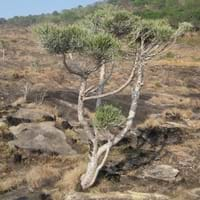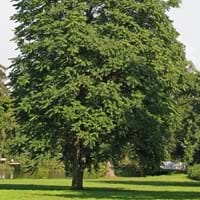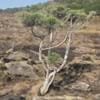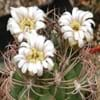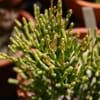Life Span
Perennial
Perennial
Origin
Southern Africa
China
Types
Firesticks, Old Man's Beard
Not Available
Number of Varieties
Not Available
Habitat
Desert, Hilly upland habitat, Semi desert
Fields, Forest edges, Grassland, Roadsides
USDA Hardiness Zone
10-13
4-8
Sunset Zone
H1, H2, 21, 22, 23, 24
Not Available
Habit
Upright/Erect
Arching/Fountain-shaped
Flower Color
Yellow
Yellow green, Light Green
Flower Color Modifier
Not Available
Bicolor
Fruit Color
Red, Red orange
Pink, Light Green, Sienna
Leaf Color in Spring
Light Green, Yellow green
Green
Leaf Color in Summer
Light Green
Dark Green
Leaf Color in Fall
Light Green
Dark Green
Leaf Color in Winter
Red, Light Green, Orange Red
Not Available
Leaf Shape
Tiny
Heart-shaped
Plant Season
Spring, Summer, Fall, Winter
Spring, Summer
Sunlight
Full Sun, Partial Sun
Full Sun, Partial Sun, Partial shade
Type of Soil
Loam, Sand
Clay, Loam, Sand
The pH of Soil
Acidic, Neutral, Alkaline
Acidic, Neutral, Alkaline
Soil Drainage
Well drained
Average
Bloom Time
Late Spring, Early Summer
Spring, Late Spring, Early Summer, Summer
Tolerances
Pollution, Drought, Salt
Pollution, Drought, Salt, Soil Compaction
Where to Plant?
Container, Ground, Pot
Ground
How to Plant?
Leaf Cutting, Seedlings, Stem Cutting
Seedlings
Plant Maintenance
Medium
Medium
Watering Requirements
Needs good drainage, Water less during winter, Water more in summer
Average Water Needs, Do Not over Water
In Summer
Lots of watering
Drought Tolerant, Average Water
In Spring
Moderate
Drought Tolerant, Average Water
In Winter
Average Water
Drought Tolerant, Average Water
Soil pH
Acidic, Neutral, Alkaline
Acidic, Neutral, Alkaline
Soil Type
Loam, Sand
Clay, Loam, Sand
Soil Drainage Capacity
Well drained
Average
Sun Exposure
Full Sun, Partial Sun
Full Sun, Partial Sun, Partial shade
Pruning
Remove damaged leaves, Remove dead branches, Remove dead leaves
Prune in late summer or fall, Prune in late winter, Remove damaged leaves, Remove dead branches, Remove dead leaves
Fertilizers
All-Purpose Liquid Fertilizer
All-Purpose Liquid Fertilizer
Pests and Diseases
Not Available, Red blotch
Red blotch, Spotted Lanterfly
Plant Tolerance
Drought
Drought, Variety of soil types
Flowers
Insignificant
Insignificant
Flower Petal Number
Not Available
Single
Fragrant Bark/Stem
No
Yes
Foliage Texture
Bold
Coarse
Foliage Sheen
Matte
Matte
Attracts
Not Available
Birds
Allergy
Eye irritation, Numb Lips
allergic reaction, Skin irritation
Aesthetic Uses
Mixed Border, Ornamental use, Showy Purposes
Beautification, Showy Purposes
Beauty Benefits
Not Available
No Beauty Benefits
Environmental Uses
Air purification
Air purification
Medicinal Uses
Antiasthamatic, anti-cancer, Antitumor, Cough, Ear ache
Anthelmintic, Antispasmodic, Asthma, Astringent
Part of Plant Used
Branch, Latex, Root
Bark, Root
Other Uses
Used as firewood, Used as Ornamental plant
Used as Ornamental plant, Used for its medicinal properties, Used for woodware
Used As Indoor Plant
Yes
No
Used As Outdoor Plant
Yes
Yes
Garden Design
Container, Feature Plant, Rock Garden, Wall, Tropical
Shade Trees, Street Trees
Botanical Name
EUPHORBIA tirucalli
AILANTHUS altissima
Common Name
aveloz, firestick plants, Indian tree spurge, naked lady, pencil tree, pencil cactus, sticks on fire, milk bush, Euphorbia tirucalli
Tree-of-Heaven
In Hindi
Sher-kandvel
कल्पवृक्ष
In German
Bleistiftstrauch
Baum des Himmels
In French
Aveloz
Arbre de paradis
In Spanish
Pencil Plant
Arbol del Cielo
In Greek
Aveloz
Δέντρο του Ουρανού
In Portuguese
avelós
Árvore do céu
In Polish
Aveloz
Drzewo Nieba
In Latin
Aveloz
Lignum de caelo
Phylum
Tracheophyta
Magnoliophyta
Class
Magnoliopsida
Magnoliopsida
Order
Euphorbiales
Sapindales
Family
Euphorbiaceae
Simaroubaceae
Genus
Euphorbia
Ailanthus
Clade
Angiosperms, Eudicots, Rosids
Angiosperms, Eudicots, Rosids
Tribe
Euphorbieae
Not Available
Subfamily
Euphorbioideae
Not Available
Number of Species
Not Available
Not Available
Importance of Pencil Plant and Tree-of-Heaven
Want to have the most appropriate plant for your garden? You might want to know the importance of Pencil Plant and Tree-of-Heaven. Basically, these two plants vary in many aspects. Compare Pencil Plant and Tree-of-Heaven as they differ in many characteristics such as their life, care, benefits, facts, etc. Every gardener must at least have the slightest clue about the plants he wants to plant in his garden. Compare their benefits, which differ in many ways like facts and uses. The medicinal use of Pencil Plant is Antiasthamatic, anti-cancer, Antitumor, Cough and Ear ache whereas of Tree-of-Heaven is Anthelmintic, Antispasmodic, Asthma and Astringent. Pencil Plant has beauty benefits as follows: Not Available while Tree-of-Heaven has beauty benefits as follows: Not Available.
Compare Facts of Pencil Plant vs Tree-of-Heaven
How to choose the best garden plant for your garden depending upon its facts? Here garden plant comparison will help you to solve this query. Compare the facts of Pencil Plant vs Tree-of-Heaven and know which one to choose. As garden plants have benefits and other uses, allergy is also a major drawback of plants for some people. Allergic reactions of Pencil Plant are Eye irritation and Numb Lips whereas of Tree-of-Heaven have allergic reaction and Skin irritation respectively. Having a fruit bearing plant in your garden can be a plus point of your garden. Pencil Plant has no showy fruits and Tree-of-Heaven has showy fruits. Also Pencil Plant is not flowering and Tree-of-Heaven is not flowering . You can compare Pencil Plant and Tree-of-Heaven facts and facts of other plants too.
